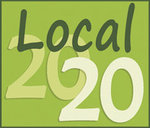Did you happen to hear the story on KUOW-FM, or read the article in The Seattle Times about how the “Taming Bigfoot” competition that started in Jefferson County has now spread to Seattle and …
This item is available in full to subscribers.
We have recently launched a new and improved website. To continue reading, you will need to either log into your subscriber account, or purchase a new subscription.
If you had an active account on our previous website, then you have an account here. Simply reset your password to regain access to your account.
If you did not have an account on our previous website, but are a current print subscriber, click here to set up your website account.
Otherwise, click here to view your options for subscribing.
* Having trouble? Call our circulation department at 360-385-2900, or email our support.
Please log in to continue |
|


Did you happen to hear the story on KUOW-FM, or read the article in The Seattle Times about how the “Taming Bigfoot” competition that started in Jefferson County has now spread to Seattle and Edmonds?
Back in 2016, nearly 100 residents of Jefferson County participated in a unique carbon-emission-reducing competition that now has spread. Created by the Climate Action Outreach Group of Local 20/20, Taming Bigfoot challenged teams to reduce their carbon footprint and awarded successful teams with prizes provided by local business sponsors.
The overall success exceeded our expectations: Participants learned what parts of their daily lives had the greatest impact on their individual carbon footprint; measured the relative effectiveness of making various changes in their consumer habits using a carbon footprint calculator designed specifically for Jefferson County; and collectively reduced their carbon footprints an average of 10 percent, saving an estimated 30.5 tons of carbon dioxide over a two-month period.
BIGFOOT MIGRATION
Soon after the competition concluded, our Bigfoot started to migrate. A number of like-minded environment-friendly groups beyond Jefferson County heard about our success and wanted to know more. I found myself making numerous presentations to these groups, explaining the community benefits of the competition and the steps required to organize one.
Groups in both Edmonds and Seattle jumped on the concept and began to plan their own competitions, with guidance from Local 20/20.
Meanwhile, I pursued the idea of developing a mobile phone app and a web server to simplify data entry by participants and data compilation for the organizers, as well as to allow anyone to report or view how teams are doing in the competitions. In anticipation of a further expansion of Taming Bigfoot, Local 20/20 also acquired the trademark rights to the name, art and mobile applications. As other communities express their interest in running Taming Bigfoot competitions, we are discovering that Bigfoot has very long legs indeed.
Edmonds began its Taming Bigfoot competition in January, and Seattle started in February, both with 182 participants. As in our original competition, team participants start by recording their consumption of home energy, production of garbage, use of transportation and water, and shopping and eating habits.
TRACK IT ONLINE
And for those in Jefferson County who didn’t have a chance to participate the first time around, the mobile phone apps and web server not only support the current competitions, but allow anyone to track their individual carbon footprint. The Taming Bigfoot web server is available at
taming-bigfoot.org and contains links to download the app for either Android or Apple devices. After registering to establish an account, you can use the app and/or website to enter and track your own carbon footprint.
By identifying yourself as a Jefferson County resident (in “Settings” on the website), you can take advantage of conversion factors that apply specifically to this county to get a more accurate measure of your carbon footprint, what it takes to reduce it and, by encouraging friends and neighbors to use the service, how your carbon footprint compares with others.
Bob Bindschadler is a retired NASA scientist now living in Quilcene and active in the Local 20/20 Climate Outreach team (L2020.org).